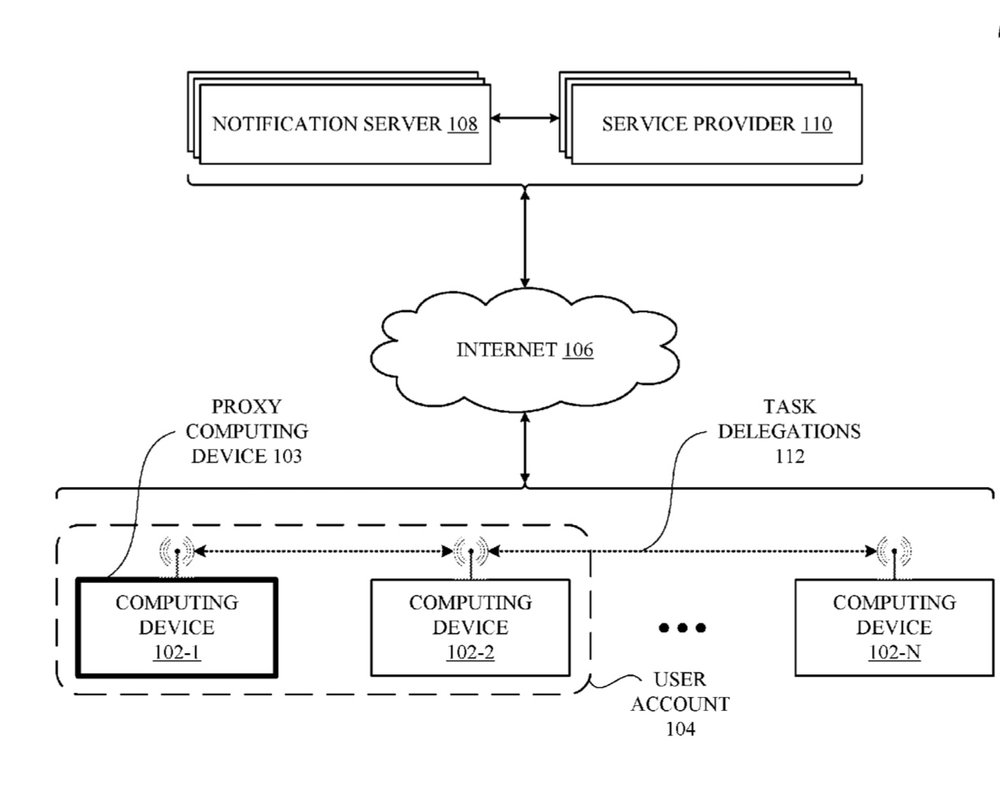Apple has been granted a patent (number 20170164141) for “opportunistic offloading of tasks between nearby computing devices” that could hint at increasing functionality in the company’s Handoff feature. With Handoff, you can start something on one device (Mac, iPhone, iPad, or Apple Watch) and then pick it up on another without losing focus on what you’re doing.
For example, look at a webpage on your iPhone, then pick up where you left off in Safari on your Mac. You can use Handoff with many Apple apps—for example, Calendar, Contacts, Pages, or Safari. Some third-party apps may also work with Handoff.

Apple’s patent is for a technique that would enable a group of computing devices to delegate tasks in a manner that promotes energy savings. Each computing device could be configured to identify situations where it has an energy advantage (e.g., when plugged-in) and should serve as a proxy computing device to other devices.
Each computing device could also configured to identify situations where one has an energy disadvantage (e.g., a low battery) and seeks out another to act as a proxy computing device. Apple says that, in this manner, computing devices can delegate tasks between one another to reduce or eliminate the processing redundancies that otherwise occur when the computing devices work in isolation to maintain network connectivity and carry out tasks on their own.
In the patent filing, Apple notes that, despite ever-improving connectivity techniques, computing devices continue to work in isolation when carrying out various tasks that are involved with providing internet-category connectivity (e.g., push notifications, Voice over Internet Protocol (VoIP) phone calls, geolocation updates, and the like). Notably, a considerable amount of energy is consumed when carrying out these tasks, as application processors and radios within the computing devices need to continually wake in order to transmit, receive, and process data. Apple says this is unfortunate considering that, in many cases, there exists an overlap between data that is processed by two or more computing devices within a cluster, yet the computing devices continue to process the overlapped data in an isolated and redundant manner. The company wants to change this.
Of course, Apple files for — and is granted — lots of patents by the U.S. Patent & Trademark Office. Many are for inventions that never see the light of day. However, you never can tell which ones will materialize in a real product.
